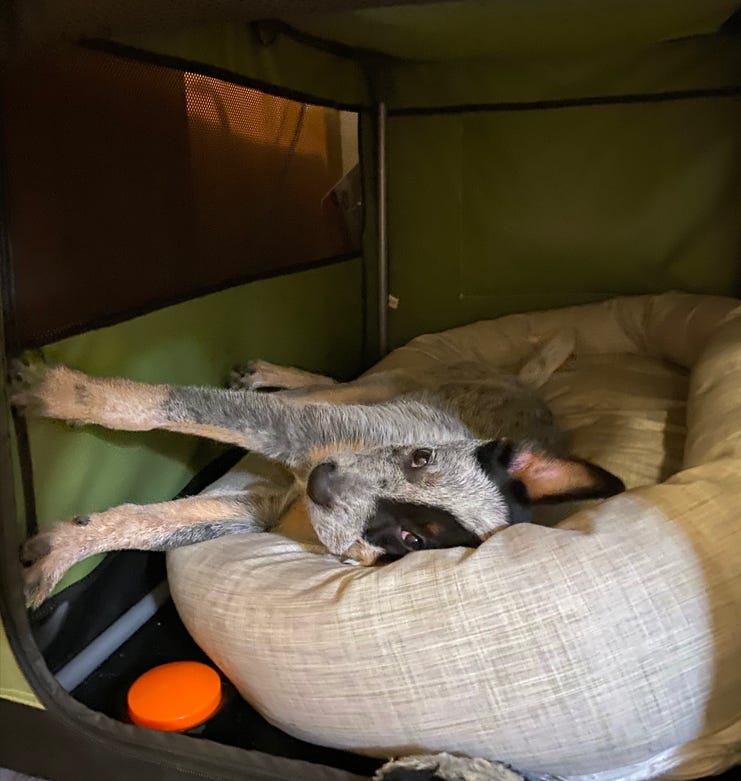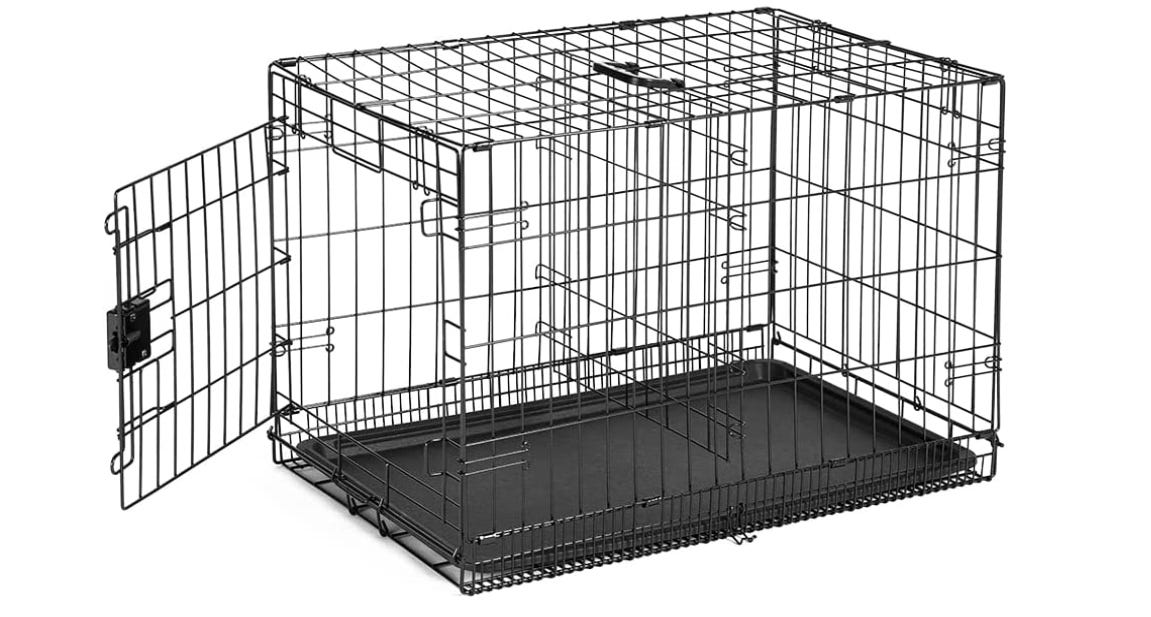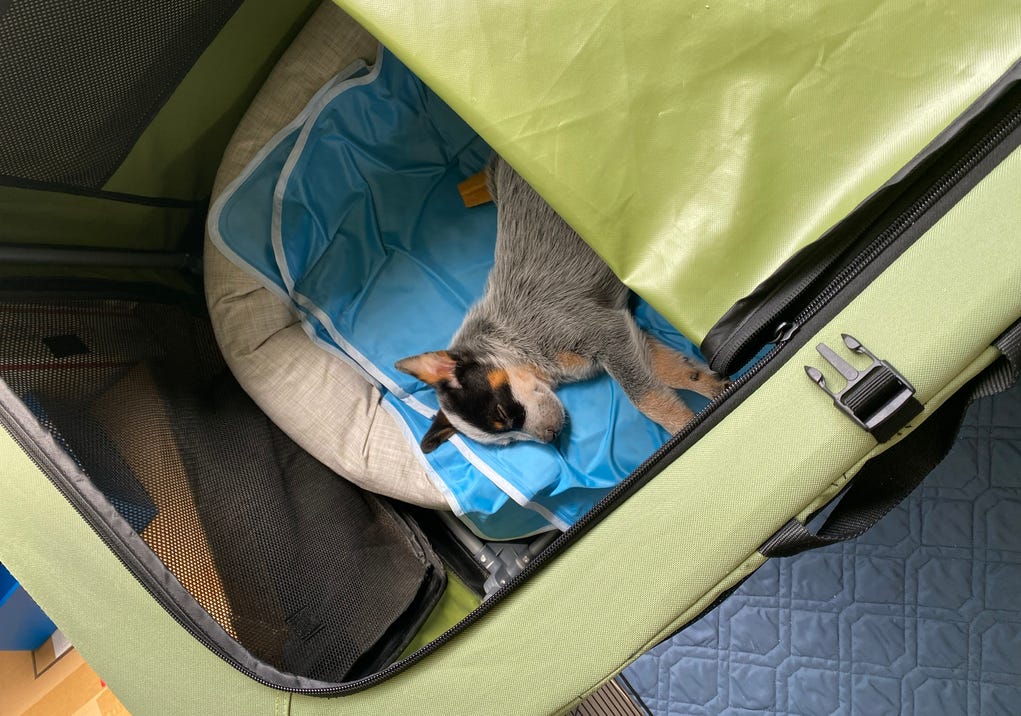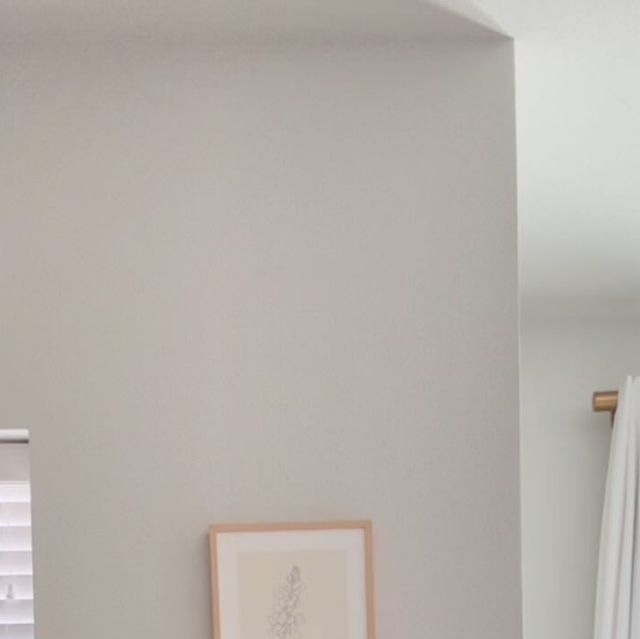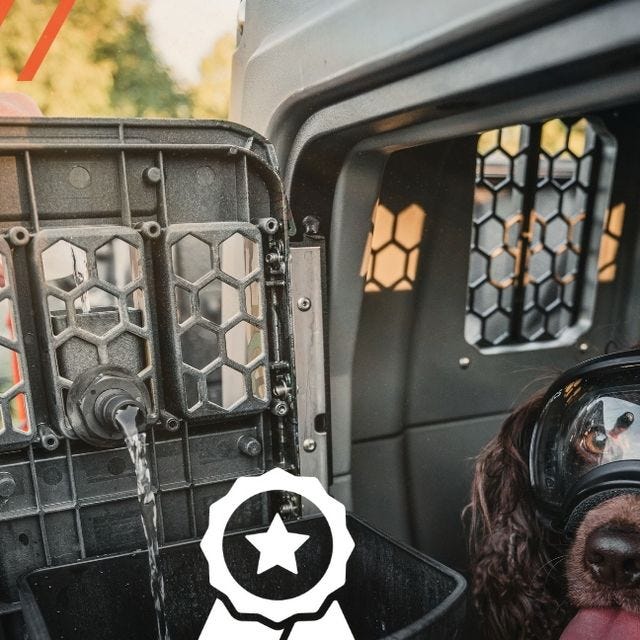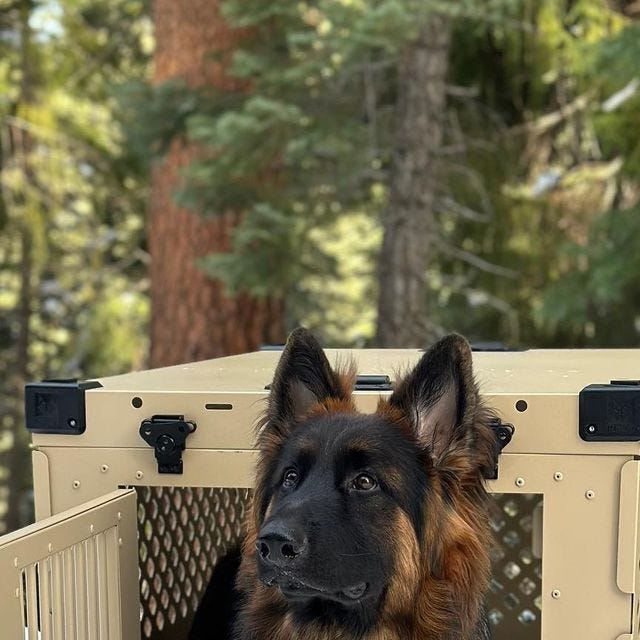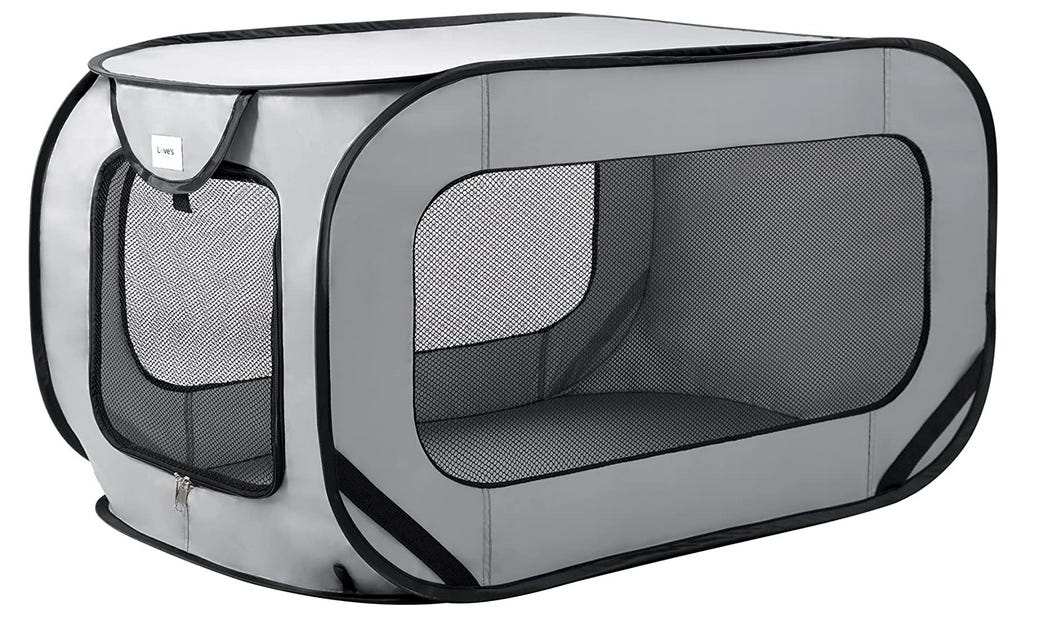Crate Training
Why a crate will benefit both you and your pup & how to find the best crate for your needs.
Growing up we never used a crate for our family dogs and I never envisioned I would use one, that is until I began researching.
Many people have misconceptions around crating dogs. Some even feel that a crate is cruel in some way. They cannot fathom “caging up” their beloved pet.
I didn’t personally think the crate was cruel in it’s essence, more just unnecessary.
As I read books and listened to podcasts, eager to learn how I could be the very best dog mom, one thing that kept coming up was crates.
Please note: affiliate links are present in this post where possible.1
I listened to a variety of dog trainers: Amy Jensen of Baxter and Bella2, Dr. Sophia Yin, Steve Walter of Nitro K9, Susan Garrett of Shaped by Dog, and yes even Cesar Milan, they all recommended crate training. While their approach to training varied, I could not ignore the fact that no matter where I turned to for information on dog training all trainers found value in crate training.
All of them.
So with an open mind I listened to each of their perspectives and concluded that a crate is a very loving way to create a safe place for your puppy to learn and grow and gain confidence. Not only that, but crating would be an essential life skill for ‘Oli to have and a good resource for me to utilize.
Reasons to Crate
Puppies are adventurous, brave, and explorative. They can and will get into everything in your house that is, if you are not prepared to properly contain them.
When they aren't sleeping, puppies are go, go, go! Having a puppy safe area for them to be contained will ease the burdens of puppy-hood significantly.
It will also help in training as the puppy will have less opportunities to rehearse unwanted behaviors.
Why your dog will benefit:
Helps teach skills: how to settle down, potty training, how to be alone, how to entertain themself, etc.
Reduces chances they will get in trouble, increasing their confidence
Increases comfort in uncertain times. Some examples being: traveling or at the vet. Vets will crate your dog if you ever have to leave them to be treated.
Gives your dog experience with confinement prior to a stressful event where it may be necessary.
Provides a den to fulfill their den instinct
When I chose to get a crate, I didn’t have a specific goal outside of ‘Oli being comfortable in the crate but I found that not only did the crate come to bring ‘Oli comfort, it brought me great comfort as well.
Why YOU will benefit:
Better Sleep: when ‘Oli is not in his crate while I sleep he roams around the room or bed, waking me up intermittently and disrupting my sleep cycle. Additionally having him in his crate at night reduces accidents since if he needs to go out I can hear him whining from my bed so I can let him out
Reduce Anxiety: I am less anxious leaving him since I know he will be calm, comfortable and safe. I don’t have to worry if something will happen to him while I am gone nor do I have to worry if any of my things will be ruined while I am not there to supervise/intervene.
Helps you Train: not only do you reduce misbehavior during unsupervised times you also reduce the time your puppy has to practice unwanted behavior which helps you teach your puppy how you want them to act and that way your bond will strengthen as they can gain more rewards rather than lose privileges.
So once you’ve decided to crate the question becomes, which crate should you invest in?
Finding the Right Crate
For those of us who grew up in families that did not crate their dogs it may come as a surprise to you just how many kinds of crates exist.
This wire crate is likely the crate that came to mind when you started reading this. I personally never wanted to own one of these wire crates but luckily there are plenty more options!
There are: soft crates, wood crates, plastic crates, aluminum crates, and even pop up crates.
So how do you choose?
Like all choices it depends on your priorities.
Do you want a crate that looks nice? Do you want one that will be easy to store away or move around? Do you want a crate that is crash tested for safe vehicle travels? Or are you simply looking for the cheapest crate on the market?
There are many different kinds of crates to pick from, at the puppy stage I personally feel it is not worth investing in a super nice crate so we went with the budget friendly option of a soft crate.
Being so new to crate training I did not want to spend north of $100 and then be unsuccessful at crating, and with ‘Oli coming home at only two months old I expected there to be a high chance of potty accidents and potential puppy antics that might ruin a nice crate.
We have had a great experience with the soft crates and I would highly recommend them for those who are unsure about crating and wanting a cheaper alternative that is not a wire crate. Because in my opinion the only pro to a wire crate is the price point.
For those of you that are looking for a more hardy option than the soft crate, I will share about the crates in other categories that we would love to add to our lives in the future.
So let’s delve into the pros and cons of the crates I have used or considered:
Soft Crates
Pros:
On the lower side of the price scale (range being $20 to $1,000 for all crates)
multiple points of entry (I personally loved the top door for the puppy days)
Lightweight
Easy to move and store
Cons:
rather easy to destroy (may not last the puppy days)
likely not made in America with high quality materials
Bentwood Crates
We have a huge crush on the Fable pets bentwood crate. I mean…
Pros:
One of the best looking crates on the market, some people may not even realize it is for the dog
It doubles as a side table!
Constructed of lick-safe materials, strength tested, and designed with minimal hazards
Fable has accessories that help make their crate fun and comfortable for your pup
Cons:
not a great option for a brand new puppy
a bit pricey but there is a bundle package to help you save
Not easy to move or store ~50 to 100lbs
Not made in America
Plastic Crates
While I am not a big fan of plastic there is one plastic crate I would consider and that is the G1 Kennel by Gunner Kennels.
This crate is meant more for travelling with your dog so it likely is not a crate you would consider if you are just looking to crate train at home. However if you plan to drive long distances with your pup and are concerned about their safety in the car this is the crate you need!
Pros:
Made in America
Set industry standards for durability and safety. Including being 5 Star Crash Test Rated.
It is the only plastic crate on the market that is double-walled rotomolded which increases the strength of the crate as well as reducing material waste during production
There is a lifetime manufacturer’s warranty
Extreme care is taken to consider the comfort and safety of the dog in the design of the crate including air flow and internal temperature of the crate.
Stainless steel hardware
Cons:
It is very expensive
Not the easiest to move or store, weight range being 27lbs for a small to 72 lbs for a large. Though there are good handles to help when moving it is needed
It is plastic
Aluminum Crates
Now if you didn’t believe me when I said $1,000 dog crate this one may not be for you. But I just had to include it because the engineer in me finds these crates fascinating. Plus if plastic was a deal-breaker for you but you are willing to spend whatever it takes for a durable and secure crate for your dog then this crate is for you.
Pros:
Made in America
Very durable and secure
Collapsible option
Cons:
The most expensive crate I know of
Not easy to move or store, unless you go with the collapsible option
Pop Up Crates
Last but not least the cheapest crate I know of is the pop up crate. This crate is much like the collapsible sun shade for your car dash and I think a wonderful option for travel as it can easily fit into a suitcase or backpack and give your pup a nice safe place to find comfort on the road, with little to no set up time!
Pros:
Very affordable
Very easy to store and move/take with you on trips
Cons:
Not a great option as your primary crate
Easy to destroy, would only be useful for dogs that enjoy being crated and do not try to escape
Not made in America with high quality materials
Does not offer a variety of sizes
This post is a part of the puppy nursery series, thank you for following along. If you are new here, you will want to check out this post:
As an Amazon Affiliate I earn a commission on qualifying purchases.
As partners with Baxter and Bella we have a discount for 25% off a lifetime membership if you use code: DAHHEELERBOY at checkout. For more information on the membership follow this link: https://www.baxterandbella.com/learn-more




